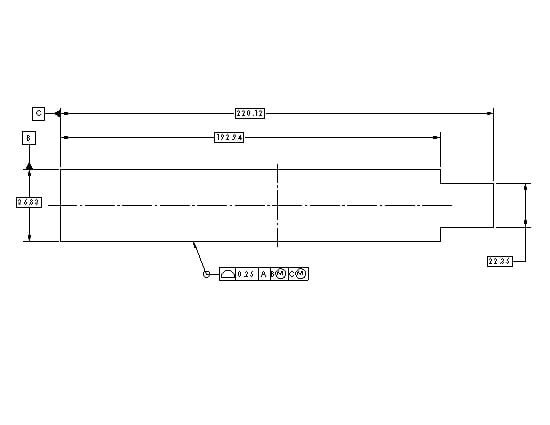CH,
#1 is a quote from Y14.5-2009, that says that a geometric tolerance directly applied to a feature is an example of a direct tolerancing method.
#2 is my opinion, that #1 does not mean that a geometric tolerance directly applied to a feature is an example of a directly toleranced dimension.
drawoh,
In the first alternative drawing, I moved the basic dimensions so that they are no longer in line with the datum feature labels. This should mean that each datum feature is a single planar surface.
J-P,
I think that we're generally in agreement on the effects of the self-referencing profile tolerance and the generally accepted result. But this isn't obvious from the one partial statement that you quoted! The sentence actually started with "I believe that the case of the single planar datum feature has been addressed". Also, in the next post I restated that the halving effect only applies to single planar datum features, and for width features the entire tolerance is available. So I think that we're on the same page with that.
Regarding the self-referencing secondary datum feature hole, I would say that this is somewhat misleading but not meaningless. Pylfrm is correct that the datum is established using a RAME but the position zone controls the axis of the UAME. The end result is that the position tolerance controls the orientation of the hole with respect to the datum A plane. I would recommend that perpendicularity be specified in this case, but the position tolerance still has meaning.
pylfrm,
You're correct about the irregular feature of size, and the directly toleranced feature. I read through the earlier thread you referenced and it's coming back to me now. We beat this to death two years ago. I put forth the same arguments that I did in this thread, but then pmarc correctly pointed out that Fig. 4-33 opens the door to centerplane datums defined on features with profile tolerances and basic width dimensions.
As I said in the other thread, I've never really been a fan of the "irregular features of size" development. The idea of using regular (cylindrical or parallel-plane) simulators to establish datums on quasi-regular discontinuous groups of surfaces is fine. But it seems that this could have been addressed using some type of datum target application, instead of creating a confusing variant of size.
Evan Janeshewski
Axymetrix Quality Engineering Inc.




![[smile] [smile] [smile]](/data/assets/smilies/smile.gif)